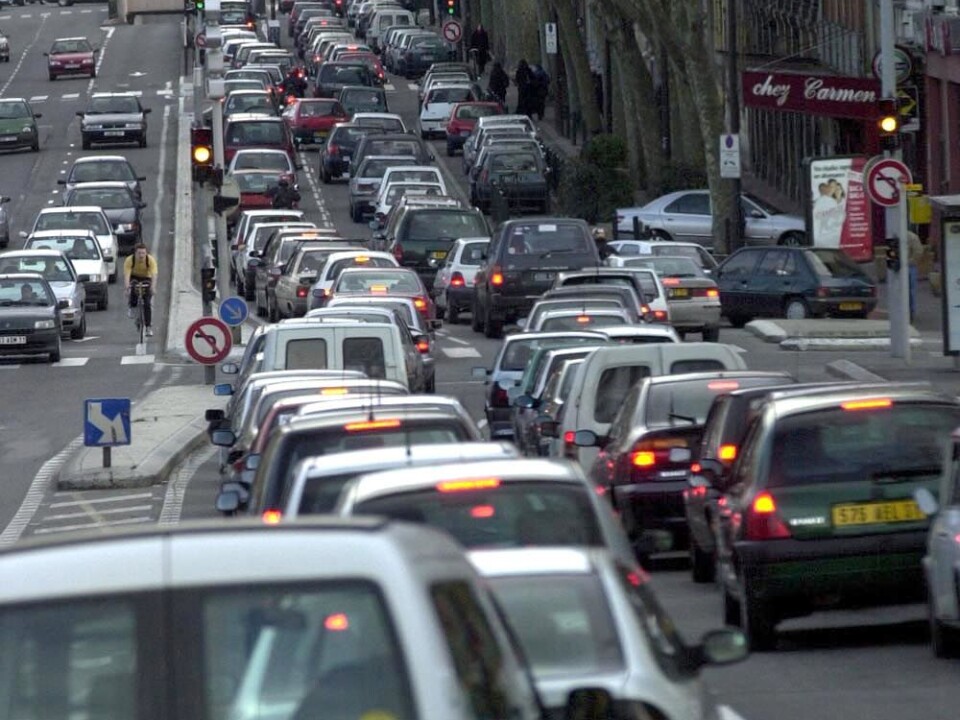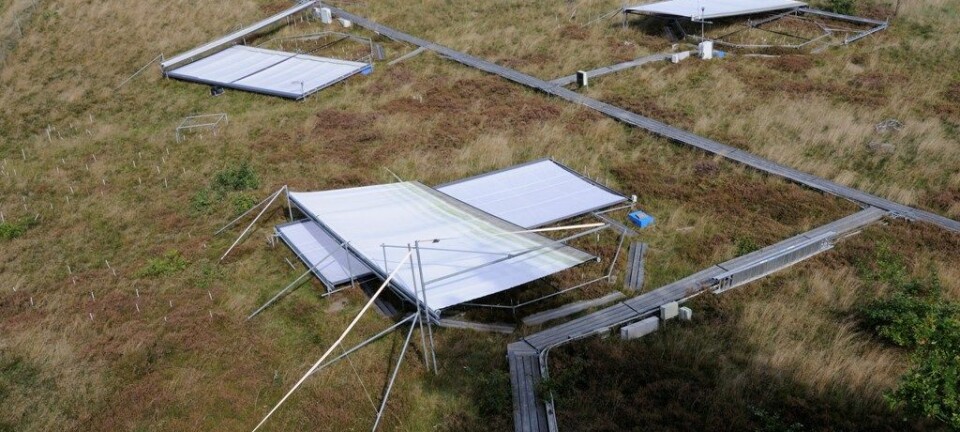
Suburbanites are climate villains
Who are the most eco-friendly, rural people or city people? Whatever the answer, if you are climate conscious you should stay clear of the suburbs.
Denne artikkelen er over ti år gammel og kan inneholde utdatert informasjon.
A debate about what is most environmentally friendly – urban life or rural life – has been going on for decades. Much of the issue is linked to cars. In other words, who is it who drives the most and releases the biggest share of CO2?
It’s common to think that urban life is the most environmentally friendly, along the following line of reasoning:
If you live far from others you will also use your car more to get to work, go shopping or for instance get to a fitness centre for some exercise. If you life in a city you have public transport and shorter distances and you can more often leave your car behind – if you even have a car.
But this is simply untrue, according to Petter Næss, professor at the Centre for Mobility and Urban Studies at the University of Aalborg in Denmark and a part-time researcher at the Institute of Transport Economics in Oslo.

“Studies in the 1990s show that people out in the country were less of a climate burden when comes to driving than people associated with major cities,” he says.
“The drivers who pollute the most, the ones who drive the furthest, are residents of the outer suburbs of big cities.”
Three groups of the population, not two
It turns out that it makes more sense to the divide population settlements into three groups rather than two.

Those who live in the middle of town, those who live “out in the sticks” – and those in between, people in the outer suburbs at a driving distance from the cities.
The biggest environmental sinners are in the latter group.
In his book Urban Structure Matters: Residential Location, Car Dependence and Travel Behaviour, Næss describes how people in the Copenhagen area travel in a normal week.
“In Copenhagen you can draw a curve for weekly travel distances and it runs in a wave. People drive the least when they live in the middle of the city, then the travel distance increases along with the distance of their residences from the city centre. Then it dips again further out,” he explains.

So it is something like this:
Larger cities have longer tentacles
“This means there is a turning point – at a certain place the distance to Copenhagen is so far that its attraction begins to decline. It is simply too much of a commute, so many people try to find local jobs or orient themselves toward other cities that are nearer. This switch results in shorter weekly driving distances,” says Næss.
Studies in Finland and Sweden generally confirm the same pattern.
“I made studies of fuel consumption in Swedish regions in the 1990s. The more urbanized a region was, and the more centralized the population was in toward the biggest city, the higher the fuel consumption,” says Næss.
The Finnish researcher Reino Martamo made comparable finds in 1995. He studied commuting distances among Finns and there too local links grew stronger with increased distance from the cities. Deep in the Finnish forests people worked where they lived and had very short commutes.
“The larger the city, the further the radial reach of its “tentacles”. Helsinki had a larger commuting territory, in the form of suburban municipalities with longer distances between homes and jobs than, for instance, Tammerfors,” says Næss.
“In other words people are willing to drive further to a city if the city is larger. This indicates that if you reside sufficiently far from large cities you accept that you cannot conduct an urban life.
The middle of the city and the middle of the country balance out
In Norway too if you live in rural areas you don’t need to feel particularly guilty about your carbon footprint on the average, at least when it comes to driving patterns.
Statistics Norway’s figures show that the average private auto in Sogn og Fjordane County on the west coast was driven 12,600 km in the course of 2010. The comparable figure for a car in Oslo was 13,100 km – in other words just a little more.
Suburbs are also covered by the national statistics:
Cars that drive the furthest annually are found in Akershus County, which wraps around Oslo, and where a large number of the population have jobs in the Norwegian capital. In 2010 the average car there drove nearly 14,000 km.
“People in the countryside don’t drive much further on average than city people,” says Terje Skjeggedal, a researcher at the Eastern Norway Research Institute who has studied developments in cities and villages.
“The main reason for this is that you need to look at more than commutes between home and work. You need to include driving linked to leisure time. If you do that you get a more even picture.”
Working close to home but driving far every weekend
Skjeggedal explains that mobility determines how much CO2 a person releases and it has increased in the countryside as well as in cities.
“Many urban residents choose to use their cars if they can afford it, even if they are driving a distance that could be walked. Also, lots of people have weekend cottages in the mountains or by the sea and drive several hundred kilometres every weekend to these,” he says.
This is referred to as compensational travel behaviour – savings made by refraining from driving during the week can be squandered on weekends.
“There isn’t necessarily a direct correlation between living in a dense population and utilising public transport alternatives open to urban residents,” Skjeggedal says.
Traditional methods of measuring are now misleading
It has become increasingly clear in the past years that the distance from home to work isn’t a sufficient yardstick for measuring how much or how little people use their cars.
“We might need a new way of thinking that among other things takes into account that people no longer simply reside in one place and commute to a physically located job,” says Kjell Harvold, a researcher at the Norwegian Institute for Urban and Regional Research (NIBR).
“People can work for instance via the internet from the mountain town of Hemsedal or at Majorstua in downtown Oslo. People live and work at several different places and traditional measurements of commuting distances can be misleading.”
“Don’t build any more villas”
Norway’s regional support policies, intended to bolster settlement of sparsely populated rural areas around the country, are not in this context bad for the climate on a national level. But on a regional basis the picture is just the opposite.
“In greater Oslo decentralization is not a benefit – it leads to longer commutes and thus more use of cars as long as people are oriented toward Oslo and aren’t living outside the zone where the city “grabs” them. People in the outermost suburbs do the most driving, so larger suburbs mean more use of automobiles,” says Næss.
He argues therefore for a densification of cities – which means we should snap out of any dreams we might have that the good life is a single-family house, barbecues on the lawn and two cars in the garage. We should build vertically instead.
“Of course I’m not saying we should be tearing down the suburbs, but maybe we shouldn’t be building even more villas on the circumferences of major urban areas.”
An increase in villas makes the distances to the city that much longer and more people wind up using their cars.
Densification is fine, but it has its price
“Instead we should build housing and places of work centrally, in the inner and central city districts, and otherwise around the most important hubs of public transport. That really stimulates a decrease in driving,” asserts Petter Næss.
Næss points out that a larger inner urban population could make pressure mount to make the city less car-friendly. It could for instance enhance efforts to enact a proposed ban on cars within Ringroad 1 in Oslo.
Even though a greater residential concentration can contribute to reduce driving, it is no universal solution for becoming more climate friendly:
“Although the combined environmental impact is usually less with a densification than with more urban sprawl, building more and larger dwellings isn’t environmentally friendly itself,” he points out.
“Despite carrying out the construction as a densification, it puts a strain on the environment. It comes at the cost of other environmental activities, for instance by eating up green spaces and by creating more local traffic.
Kjell Harvold isn’t convinced that densification is so good for the planet long term.
“Densification of cities often means that you build near a river or the ocean, and so the city is more susceptible to river flooding and rises in sea levels,” he states.
“In other words, densification can make a city more vulnerable – and a city that disappears into a river or a fjord some time or another cannot be called sustainable.”
Sources:
P. Næss (2006) Urban Structure Matters: Residential Location, Car Dependence and Travel Behaviour. New York/London: Routledge
Translated by: Glenn Ostling
































